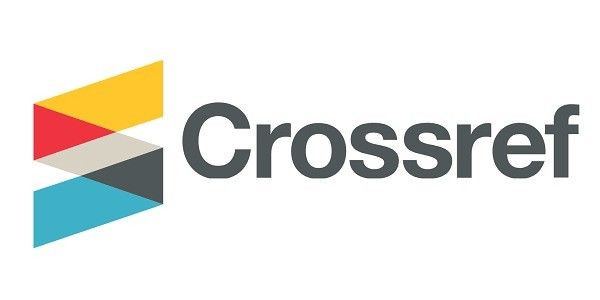Research Article
Effectiveness of Task-Oriented Training to Improve Upper Limb Function Among Spinal Cord Injury Tetraplegic Patients
- Dr. Faruq Ahmed
Corresponding author: Faruq Ahmed, Junior Consultant Physiotherapist, Department of Physiotherapy, Centre for the Rehabilitation of the Paralysed (CRP), Savar, Dhaka-1343, Bangladesh. Contact: +8801676761630 Email: physiofaruq2020@gmail.com
Volume: 1
Issue: 1
Article Information
Article Type : Research Article
Citation : Jolly Akter, Kazi Abdur Rafi, Faruq Ahmed, Jahanara Akter, Tasjide Tayeba Ratri, Md Mehedi Hassan Rokey, Shamima Nasrin Shimu, H.M Kaykobad. Effectiveness of Task-Oriented Training to Improve Upper Limb Function Among Spinal Cord Injury Tetraplegic Patients. Journal of Neurology and Neurosurgery 1(1). https://doi.org/10.61615/JNN/2025/MAR027140320
Copyright: © 2025 Faruq Ahmed. This is an open-access article distributed under the terms of the Creative Commons Attribution License, which permits unrestricted use, distribution, and reproduction in any medium, provided the original author and source are credited.
DOI: https://doi.org/10.61615/JNN/2025/MAR027140320
Publication History
Received Date
02 Mar ,2025
Accepted Date
12 Mar ,2025
Published Date
20 Mar ,2025
Abstract
Background
Spinal cord injury (SCI) is a global health issue that affects a substantial number of individuals globally, resulting in either lifetime impairment or death.
Objectives
The objective of the study was to assess the effectiveness of task-oriented training (TOT) to improve upper limb function among SCI tetraplegic patients.
Methods
The randomized clinical trial was conducted from May 2023 to July 2023. A total of 30 individuals with SCI, tetraplegic patients, were allocated randomly to an experimental and a control group. The trial group was provided TOT along with conventional physiotherapy. The control group got just conventional physiotherapy. The total duration of the trial regimen was four weeks, three sessions per week, or a total of twelve sessions. The Statistical Program for Social Science (SPSS) version 20 was used to perform the data analysis. The study used the Mann-Whitney U test for between-group analysis and the Wilcoxon test for within-group analysis due to non-parametric data. A p-value < 0.05 was considered a significant outcome.
Results
The mean age ± SD of the control and experimental groups were 34.73 ± 10.194 and 39.93 ± 13.483, respectively. The gender in both the control and the experimental groups were quite similar. The task-oriented intervention was more effective than conventional physiotherapy in improving dressing function (p = 0.011) and writing skills (p = 0.003) among SCI tetraplegic patients. The study used the Wilcoxon signed-rank test, which revealed that TOT significantly improved upper limb function, including feeding, bathing, dressing, grooming, toilet use, transferring, and writing skills in SCI tetraplegic patients.
Conclusion
The results of the study demonstrated that task-oriented training has beneficial effects on the improvement of upper limb functional recovery in tetraplegic patients with SCI.
Keywords: Spinal Cord Injuries; Task-Oriented Training; Upper Extremity; Tetraplegia.
►Effectiveness of Task-Oriented Training to Improve Upper Limb Function Among Spinal Cord Injury Tetraplegic Patients
Jolly Akter1, Kazi Abdur Rafi1, Faruq Ahmed1*, Jahanara Akter1, Tasjide Tayeba Ratri1, Md Mehedi Hassan Rokey2, Shamima Nasrin Shimu2, and H.M Kaykobad1
1Department of Physiotherapy, Centre for the Rehabilitation of the Paralysed (CRP), Savar, Dhaka-1343, Bangladesh.
2Department of Physiotherapy, SAIC College of Medical Science and Technology (SCMST), Mirpur, Dhaka-1216, Bangladesh.
Introduction
Spinal cord injury (SCI) is one of the leading causes of serious consequences and fatalities. Significant sensory, motor, or autonomic dysfunction below the neurological level is the ultimate result of SCI, which leads to long-term disability [1]. People with SCI frequently face unfavorable outcomes such as social isolation, low self-esteem and quality of life (QOL), and reliance [2]. It has detrimental effects on people, their families, and society as a whole. Any person, anyplace on the globe, and at any moment, may experience a spinal cord injury [3]. SCI is a deadly condition that requires profound and specialist therapeutic rehabilitation [4]. Tetraplegia is a quite common, deadly, and debilitating motor condition because it affects arm and forearm function, which affects autonomy, mobility, and overall QOL [5]. One of the main objectives for individuals with SCIs who are tetraplegic is upper-limb rehabilitation [6]. Little advances in upper limb skill proficiency could have a big impact on self-management and life outcomes [7].
SCI is a terrible condition that necessitates intensive therapy by professionals [8]. The patients have been rehabilitated using a variety of therapy regimens. Task-oriented training (TOT) has currently been proposed as an alternate strategy for people with SCI [9]. The TOT is a method that involves practicing an individual motor activity several times until the patient can do it independently without making noticeable mistakes. The fundamental mechanism beneath this is that the entire functional activity is performed without taking into account the range of motion at specific joints [10]. The TOT has concentrated on particular tasks that hold significance for the individual being treated. In this approach, the therapist and the patient collaborate to develop a treatment plan and goal that the client finds interesting and attractive [9].
SCI is a serious public health concern in Bangladesh, where it causes disability in about 4.6% of the population. The findings indicate that SCI most commonly affects young people. In Bangladesh, approximately 4.6 percent of people are disabled as a result of SCI, and it is a major public health issue. The results show that young individuals are most frequently affected by traumatic SCI. SCI is most common in the UK among those aged 16 to 30, with 19 constituting the most common age. Patients with SCI have a variety of neurological characteristics, etiologies, genders, and outcomes [11]. To design a treatment plan, it is necessary to ascertain how well TOT improves upper extremity function in tetraplegic individuals with SCI. The usefulness of TOT for patients with SCIs has not been studied. As a result, it will have positive consequences for both SCI patients and physiotherapists, as they have discovered methods that can help them improve the functioning of the upper limb more quickly. The objective of the study was to determine the effectiveness of TOT along with conventional therapy in improving upper limb function among SCI tetraplegic patients.
Methods
Design and Ethics
The randomized controlled trial was carried out between the beginning of May 2023 and the end of July 2023. Before participating, patients got complete information about the research aims and protocol and provided signed informed consent. The project was approved by administrative bodies from the Bangladesh Health Professions Institute (BHPI), the CRP ethical committee, and the Institutional Review Board (ERB). The registration number is CRP/BHPI/IRB/03/2023/717.
Population
Patients with SCI who were admitted to the spinal cord injury unit, Centre for the Rehabilitation of the Paralysed (CRP), were recruited. Patient eligibility criteria were age between 18 and 60 years, both genders and being diagnosed with tetraolegic SCI patients by magnetic resonance imaging. Subjects were excluded if they had any pathological issues, mental illness, a red flag of neck pain, or had a previous neck surgery.
Randomization
Individuals were randomized to either the trial or control groups using automated randomization. Random recruitment was used to find patients who met the inclusion criteria. After recruitment, the researcher distributes participants to the trial and control groups to improve internal validity. The research method and sample allocation are shown in Figure 1.

Figure 1 CONSORT Flow Diagram of Participants and Group Allocation
Outcome Measurements
The features and goals of the present study were taken into consideration when designing a structured questionnaire. With the supervisor's guidance and approval, the questionnaire was developed in accordance with specific standards. The first part of the questions described sociodemographic information. The second part included the Spinal Cord Independence Measure (SCIM) scale. It was developed particularly for individuals with SCI. It emphasizes the capacity to carry out fundamental daily duties and accounts for the financial strain that disability takes in addition to the effect that impairment has on the patient's general health and comfort level [12].
Physical Intervention
Patients in the experimental group got TOT along with usual physiotherapy interventions from trained and qualified physiotherapists. In the control group, participants were given only the usual physiotherapy treatment. The total duration of the trial regimen was four weeks, with three sessions per week, and the duration of each session of treatment was 40-45 minutes. The experimental group received TOT as well as throwing a towel off the table, catch-throwing a ball, dusting on the table, supination over foam rolls, throwing a cup with the wrist, exercises with putty, and putting glass on top of each other, switching, turning, needling amacroni, and lifting cards off the table [8]. As a post-test, the assessor then gathered information from the patients once more. The same assessor, who was not aware of the specifics, reassessed the final measures once the study was over. We cautioned patients against disclosing their workout regimen.
Data Analysis
The Statistical Program for Social Science (SPSS), version 20, was used to perform the data analysis. For the between-group analysis, the Mann-Whitney U test was used, and for the within-group analysis, the Wilcoxon test was used due to non-parametric data. 95% confidence intervals for both sides were calculated. A p-value < 0.05 was considered a significant outcome.
Results
In this randomized controlled trial, 30 patients agreed to participate and finally completed the trial. Data were collected through face-to-face interviews with participants using the SCIM scale to measure their daily functional activities. This study has shown that TOT, along with conventional physiotherapy, was effective for the functional recovery of patients with tetraplegic SCI patients. Table 1 shows the study participants' basic clinical characteristics. Each group's baseline characteristics were comparable. Since there were no negative effects, everyone accepted the intervention properly. The mean age ± SD of the control and experimental groups were 34.73 ± 10.194 and 39.93 ± 13.483, respectively. The study showed that the gender in both the control and the experimental groups were quite similar. The height mean ± SD of the participants was 66.73 ± 1.897 and 65 ± 4.818 for the control and experimental groups. The weighted mean ± SD of the participants was 52.67 ± 10.048 and 19 ± 10.283 for the control and experimental groups. The majority of the participants’ educational qualification was primary level (46.7%) in the trial group, and the majority of the participants’ educational qualification was secondary level (40.1%) in the control group.
Table 1: Socio-Demographic Characteristics of The Participants
|
Variable |
Experimental group |
Control group |
|
Age (Mean ± SD) |
34.73 ± 10.194 |
39.93 ±13.483 |
|
Height (Mean ± SD) |
66.73 ± 1.897 |
65 ± 4.818 |
|
Weight (Mean ± SD) |
52.67 ± 10.048 |
19 ± 10.283 |
|
Gender (%) |
Male 86.7% Female 13.3% |
Male 93.3% Female 6.7% |
|
Educational qualification (%) |
Illiterate 33.3% Primary 46.7% Secondary 13.3 Higher secondary 6.7% |
Illiterate 19.9% Primary 35.5% Secondary 40.1% Higher secondary 4.5% |
Table 2 presented that the calculated value of the Mann-Whitney U test for the dressing function of the participants between the experimental and control group was 59.000 with a Z value of -2.554; the p-value of .011 indicated that the significance was less than 0.05. So, the task-oriented exercise intervention was more effective than conventional physiotherapy to improve dressing function among SCI tetraplegic patients. It also presented that the calculated value of the Mann-Whitney U test for the writing skill function of the participants between the experimental and control group was 49.500 with a Z value of -2.930, and the p-value of .003 indicated that the significance was less than 0.05. So, the task-oriented exercise intervention was more effective than conventional physiotherapy in improving writing skills among SCI tetraplegic patients.
The calculated value of the Mann-Whitney U test for feeding function, bathing function, grooming function, use of toilet function, and transferring function of the participants between the experimental and control group with a Z value and p-value indicated that the significance value was more than 0.05. So, the task-oriented exercise intervention was not more effective than conventional physiotherapy in improving feeding function, bathing function, grooming function, use of toilet function, and transferring function among SCI tetraplegic patients.
Table 2: Mann-Whitney U-Test Between the Experimental and Control Group
|
Variable |
Mean Rank |
Mann-Whitney U Test |
Z value |
P value |
|
|
Experimental |
Control |
||||
|
Feeding function |
16.90 |
14.10 |
91.500 |
-1.343 |
0.179 |
|
Bathing function |
18.00 |
13.00 |
75.000 |
-1.000 |
0.073 |
|
Dressing function |
19.07 |
11.93 |
59.000 |
-2.554 |
0.011* |
|
Grooming function |
17.37 |
13.63 |
84.500 |
-1.666 |
0.096 |
|
Use of toilet function |
16.27 |
14.73 |
101.000 |
-.556 |
0.578 |
|
Transferring function |
17.50 |
13.50 |
82.500 |
-1.523 |
0.128 |
|
Writing skill |
19.70 |
11.30 |
49.500 |
-2.930 |
0.003* |
Table 3 describes the comparison of the participants before (pre) and after (post) upper limb function, likely feeding function, bathing function, dressing function, grooming function, use of toilet function, transferring function, and writing skill. By examining the final test statistics portion of the table by the Wilcoxon signed-rank test, it was discovered that conventional physiotherapy was effective for upper limb function, likely feeding function (Z = -3.317, p = .001), dressing function (Z = -2.236, p = .025), grooming function (Z = -3.162, p = .002), use of toilet function (Z = -2.236, p = .025), and writing skill (Z = -2.000, p = .046) of SCI tetraplegic patients.
Table 3: Wilcoxon Test for Control Group
|
Variable |
Mean |
Standard Deviation |
Z value |
P value |
||
|
pretest |
posttest |
pretest |
posttest |
|||
|
Feeding function |
0.13 |
0.87 |
0.352 |
0.516 |
-3.317 |
0.001* |
|
Bathing function |
0.13 |
0.33 |
0.414 |
0.258 |
-1.732 |
0.083 |
|
Dressing function |
0.07 |
0.40 |
0.258 |
0.632 |
-2.236 |
0.025* |
|
Grooming function |
0.13 |
0.80 |
0.352 |
0.561 |
-3.162 |
0.002* |
|
Use of toilet function |
0.07 |
0.40 |
0.258 |
0.632 |
-2.236 |
0.025* |
|
Transfer |
0.07 |
0.20 |
0.258 |
0.414 |
-1.414 |
0.157 |
|
Writing skill |
0.13 |
0.40 |
0.352 |
0.632 |
-2.000 |
0.046* |
Table 4 describes the comparison of the participants before (pre) and after (post) upper limb function, likely feeding function, bathing function, dressing function, grooming function, use of toilet function, transferring function, and writing skill. By examining the final test statistics portion of the table by the Wilcoxon signed-rank test, it was discovered that the TOT was highly effective for upper limb function, likely feeding function (Z = -3.606, p = .000), bathing function (Z = -3.126, p = .002), dressing function (Z = -3.606, p = .000), grooming function (Z = -3.606, p = .000), use of toilet function (Z = -2.646, p = .008), transferring function (Z = -2.646, p =.008), and writing skill (Z = -3.162, p = .002) of SCI tetraplegic patients.
Table 4: Wilcoxon test for Experimental group
|
Variable |
Mean |
Standard Deviation |
Z value |
P value |
||
|
pretest |
posttest |
pretest |
posttest |
|||
|
Feeding function |
.20 |
1.07 |
.414 |
.258 |
-3.606 |
0.000* |
|
Bathing function |
.00 |
.67 |
.000 |
.488 |
-3.126 |
0.002* |
|
Dressing function |
.00 |
.87 |
.000 |
.352 |
-3.606 |
0.000* |
|
Grooming function |
.20 |
1.07 |
.414 |
.258 |
-3.606 |
0.000* |
|
Use of toilet function |
.00 |
.47 |
.000 |
.516 |
-2.646 |
0.008* |
|
Transfer |
.00 |
.47 |
.000 |
.516 |
-2.646 |
0.008* |
|
Writing skill |
.27 |
.93 |
.458 |
.458 |
-3.162 |
0.002* |
Discussion
The purpose of this study was to determine the effect of task-oriented exercise along with conventional therapy in patients with tetraplegic SCI. Among the 30 participants, the majority of the participants (30.0%) were from the age range between 21 and 30 years. The mean age ± SD of the control and experimental groups were 34.73 ± 10.194 and 39.93 ± 13.483, respectively. In this study, the experimental group was 86.7% male and 13.3% female, while the control group was 93.3% male and 6.7% female. SCI is most common in the UK among those aged 16 to 30, with 19 constituting the most common age. Patients with SCI have a variety of neurological characteristics, etiologies, genders, and outcomes [11,13].
The study demonstrated that among the total 30 participants within the group analysis, the experimental group was more significant than the control group. It indicates that TOT was more effective on upper limb functional recovery. Besides, Physiotherapy is also essential in improving upper limb function in patients with tetraplegic SCI. In the study, among the total 30 participants, within-group analysis through the Mann-Whitney U test, writing skills, and dressing function were significant for the experimental group. It indicates that task-oriented therapy had a great impact on improving upper limb function in patients with tetraplegic SCI. It indicates that conventional physiotherapy is also effective in patients with tetraplegic SCI but less than task-oriented training. According to a review study of results, physiotherapy professionals have a lot of faith in TOT to treat neurological conditions, including spinal cord damage. It assessed the quality of the data supporting TOT's effectiveness in improving hand or upper extremity abilities in individuals with SCI [14].
Another study demonstrated that earlier physical therapy can enhance patients with SCI of the upper limbs through task-oriented intervention [15]. The significant improvements in SCIM were shown in the study. The maximum number of self-care activities was increased. Dunlop discovered that exercising improved rehabilitation after a spinal cord injury [16].
According to the findings of another study, TOT helps individuals with cervical SCI to improve their hand and arm functions. Following SCI, it was proposed that upper limb exercise enhances your standard of life, routine activities, and strength of muscles [17]. Considering its encouraging outcomes, the use of TOT in conjunction with other therapies seems to be more widely accepted. According to a different study, there is a moderate amount of evidence that TOT improves upper extremity limb function in people with SCI [18].
In this study by the Wilcoxon signed-rank test, it was discovered that the task-oriented training was highly effective for upper limb function, likely feeding function, bathing function, dressing function, grooming function, use of toilet function, transferring function, and writing skill of spinal cord injury tetraplegic patients. By the Wilcoxon signed-rank test, it was also observed that conventional physiotherapy was effective for upper limb function for SCI tetraplegic patients. According to one study, task-specific training was a successful method for enhancing functional abilities in individuals with SCIs, showing potential for enhancing everyday activities [8]. Another recent study showed that a two-month program focused on specific tasks could greatly enhance the physical function of people with SCIs [19]. One similar study found clinically significant results in gaining performance and satisfaction levels. The findings of the study supported the beneficial effects of the TOT in patients with SCI [20].
Limitations
There were some situational limitations and barriers while considering the results of the study in different aspects. The limited number of sample sizes and shortened duration of the study- these limitations should be noted. The measurement technique has another drawback, which doesn’t represent the generality of the findings. Data collection for the study is done in the summer. The other seasons, like winter and the rainy season, may vary in the result and also in the patient’s complications.
Recommendation
Further study is needed to improve evidence-based clinical practice as well as knowledge and skills. A double-blinded randomized clinical trial is recommended in the future with a large sample size. The government needs to plan an awareness program in different areas of our country to prevent SCI and its complications with the risk. Only that, it is badly needed to establish soon the government rehabilitation centre in a broad perspective and recruit specialized rehabilitation practitioners to enhance functional recovery and proper reintegration as well.
Conclusion
The results of the study have demonstrated that task-oriented training along with conventional therapy has beneficial effects on the improvement of upper limb functional recovery in tetraplegic patients with SCI. If rehabilitation is started earlier after SCI, the patient can be made more functionally independent. The TOT might be an alternative rehabilitation approach for improving QOL and independence of individuals with SCI.
Acknowledgments
The authors would like to thank the Department of Physiotherapy of CRP for their coordination and great collaboration. The authors would also like to sincerely thank all the participants.
Ethical consideration
The article paid attention to all ethical concepts.
Author contribution
All authors contributed equally to preparing the article.
Conflict of interest
The authors disclosed no conflicts of interest.
Funding
The authors report there was no funding to declare.
- Furlan JC, Noonan V, Cadotte DW, Fehlings MG. (2011). Timing of decompressive surgery of spinal cord after traumatic spinal cord injury: an evidence-based examination of pre-clinical and clinical studies. Journal of neurotrauma. 28(8): 1371-1399.
- Chompoonimit A, Nualnetr N. (2016). The impact of task-oriented client-centered training on individuals with spinal cord injury in the community. Spinal Cord. 54(10): 849-854.
- Noonan VK, Fingas M, Farry A. (2012). Incidence and prevalence of spinal cord injury in Canada: a national perspective. Neuroepidemiology. 38(4): 219-226.
- Siddall PJ, McIndoe L, Austin P, Wrigley PJ. (2017). The impact of pain on spiritual well-being in people with a spinal cord injury. Spinal cord. 55(1): 105-111.
- Winstein CJ, Wolf SL, Dromerick AW. (2016). Interdisciplinary Comprehensive Arm Rehabilitation Evaluation (ICARE) Investigative Team. Effect of a task-oriented rehabilitation program on upper extremity recovery following motor stroke: the ICARE randomized clinical trial. Jama. 315(6): 571-581.
- Snoek GJ, IJzerman MJ, Hermens HJ, Maxwell D, Biering-Sorensen F. (2004). Survey of the needs of patients with spinal cord injury: impact and priority for improvement in hand function in tetraplegics. Spinal cord. 42(9): 526-532.
- Spooren AI, Janssen-Potten YJ, Snoek GJ, Ijzerman MJ, Kerckhofs E, Seelen HA. (2008). Rehabilitation outcome of upper extremity skilled performance in persons with cervical spinal cord injuries. Journal of rehabilitation medicine. 40(8): 637-644.
- Marryam M, Umar M, Ain SQ. (2018). Effectiveness of task specific training in improving functional independence after spinal cord injury. Rawal Medical Journal. 43(2): 245-247.
- Spooren AI, Janssen-Potten YJM, Kerckhofs E, Bongers HMH, Seelen HAM. (2011). ToCUEST: a task-oriented client-centered training module to improve upper extremity skilled performance in cervical spinal cord-injured persons. Spinal Cord. 49: 1042–1048.
- Hoffman LR, Field-Fote EC. (2007). Cortical reorganization following bimanual training and somatosensory stimulation in cervical spinal cord injury: a case report. Physical Therapy. 87(2): 208-223.
- Scivoletto G, Morganti B, Ditunno P, Ditunno JF, Molinari M. (2003). Effects on age on spinal cord lesion patients' rehabilitation. Spinal Cord. 41(8): 457-464.
- Itzkovich M, Gelernter I, Biering-Sorensen F. (2007). The Spinal Cord Independence Measure (SCIM) version III: reliability and validity in a multi-center international study. Disability and rehabilitation. 29(24): 1926-1933.
- Kennedy P, Rogers BA. (2000). Anxiety and depression after spinal cord injury: a longitudinal analysis. Archives of physical medicine and rehabilitation. 81(7): 932-937.
- Holanda LJ, Silva PM, Amorim TC, Lacerda MO, Simão CR, Morya E. (2017). Robotic assisted gait as a tool for rehabilitation of individuals with spinal cord injury: a systematic review. Journal of neuroengineering and rehabilitation. 14(1): 126.
- Herzer KR, Chen Y, Heinemann AW, González-Fernández M. (2016). Association between time to rehabilitation and outcomes after traumatic spinal cord injury. Archives of physical medicine and rehabilitation. 97(10): 1620-1627.
- Dunlop CA. (2014). The possible experts: how epistemic communities negotiate barriers to knowledge use in ecosystems services policy. Environment and Planning C: Government and Policy. 32(2): 208-228.
- Morris DM, Taub E, Mark VW. (2019). Protocol for a randomized controlled trial of CI therapy for rehabilitation of upper extremity motor deficit: The Bringing Rehabilitation to American Veterans Everywhere Project. The Journal of head trauma rehabilitation. 34(4): 268-279.
- Maya G, MOHAMED AH, AHMED PD, Gehan M. (2021). Effect of task-oriented training on upper extremity function for patients with spinal cord and traumatic brain injuries: Systematic review. The Medical Journal of Cairo University. 89: 1731-1738.
- Scivoletto G, Tamburella F, Laurenza L, Molinari M. (2013). The spinal cord independence measure: how much change is clinically significant for spinal cord injury subjects. Disabil Rehabil. 35(21): 1808-1813.
- Spooren AI, Janssen-Potten YJM, Kerckhofs E, Bongers HMH, Seelen HAM. (2011). Evaluation of a task-oriented client-centered upper extremity skilled performance training module in persons with tetraplegia. Spinal Cord. 49(10): 1049–1054.
Download Provisional PDF Here
PDF




p (1).png)




.png)




.png)
